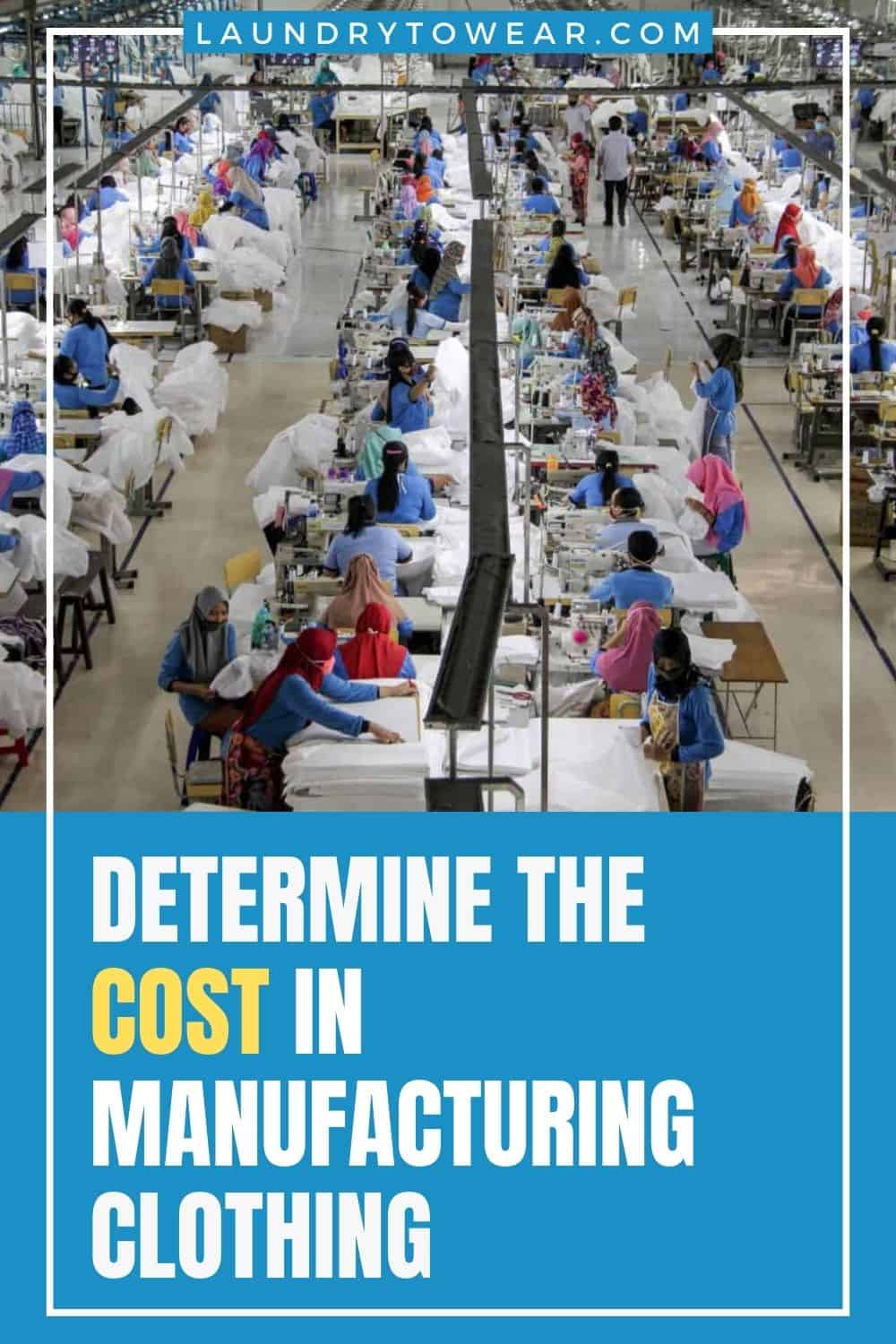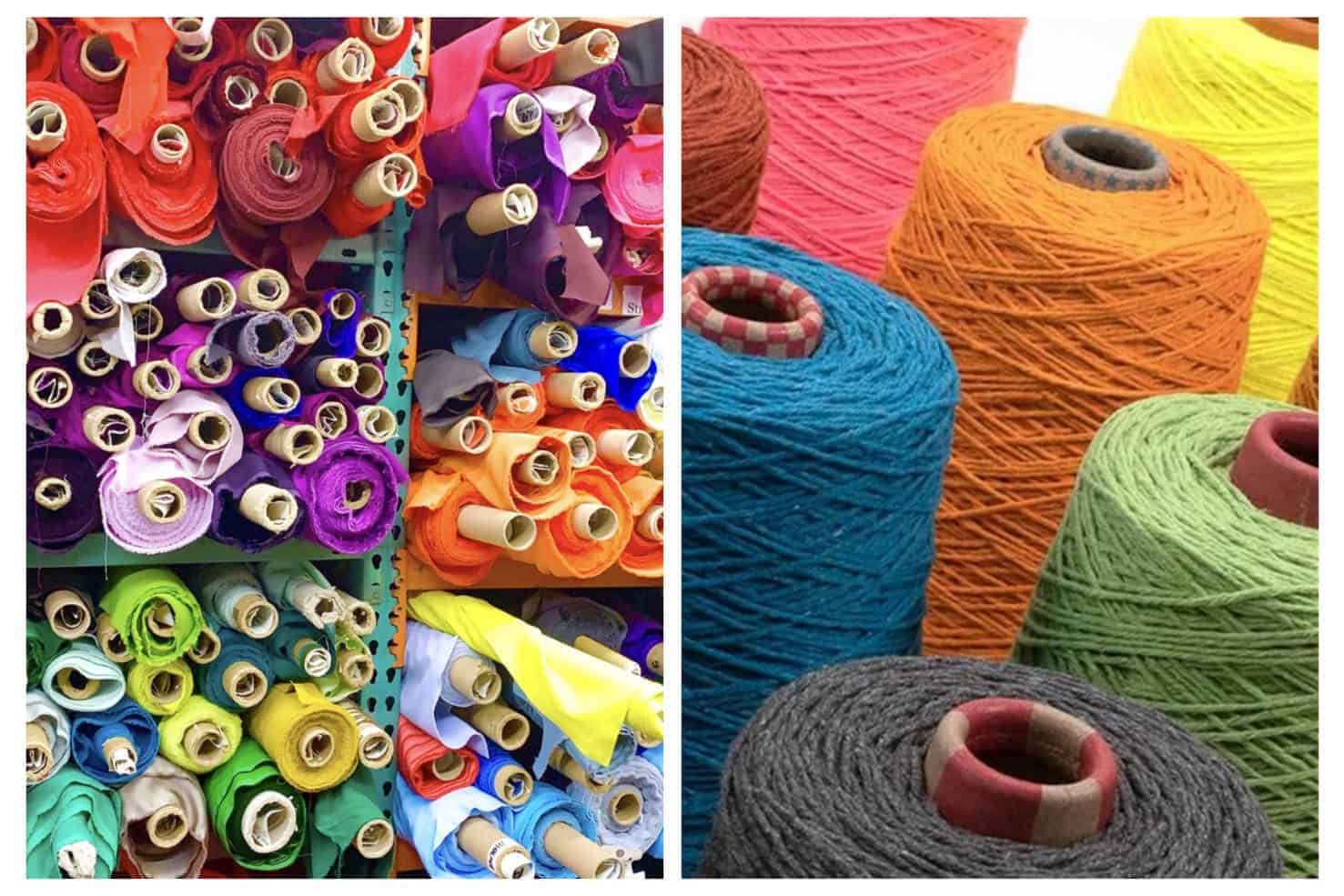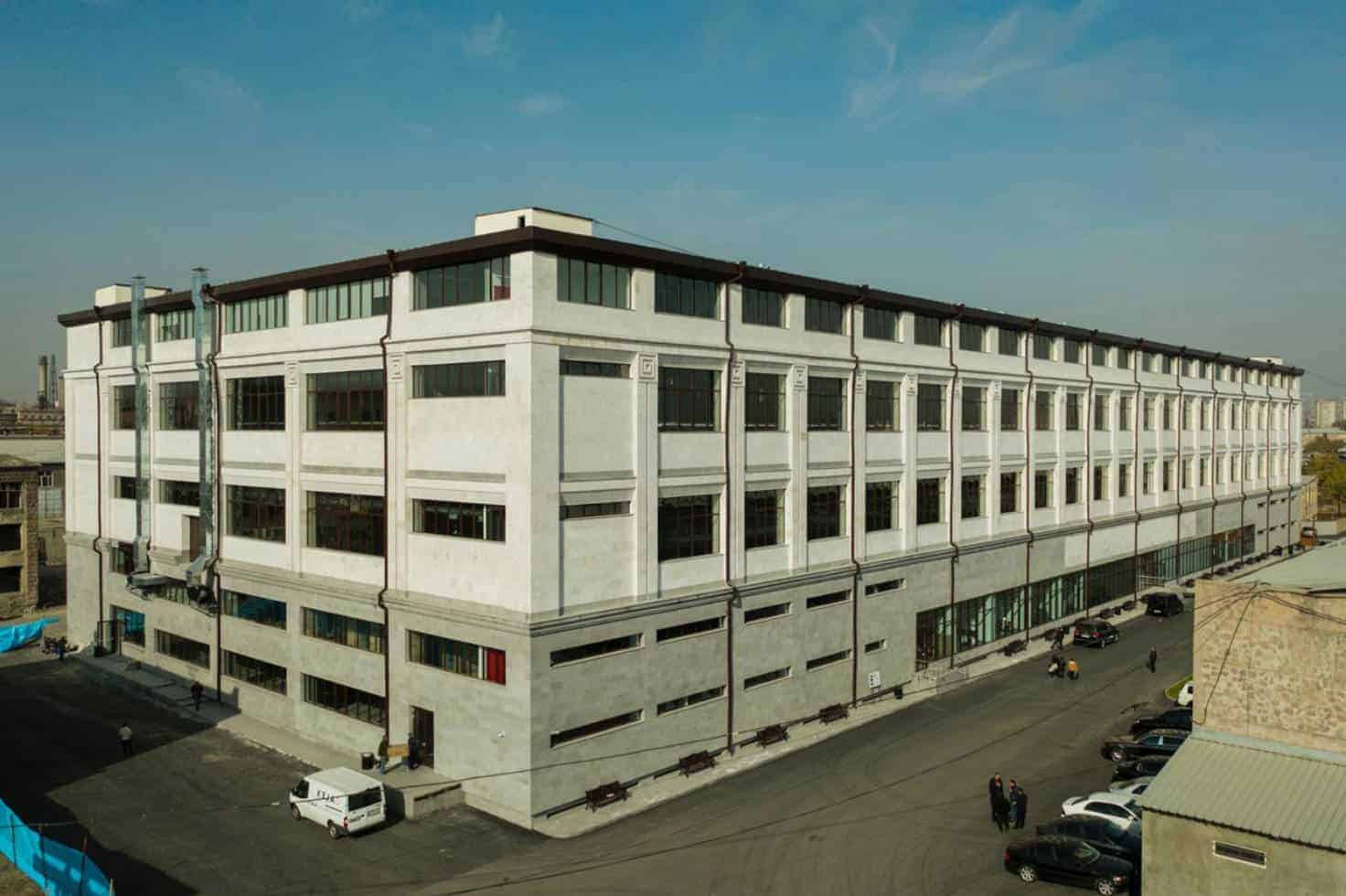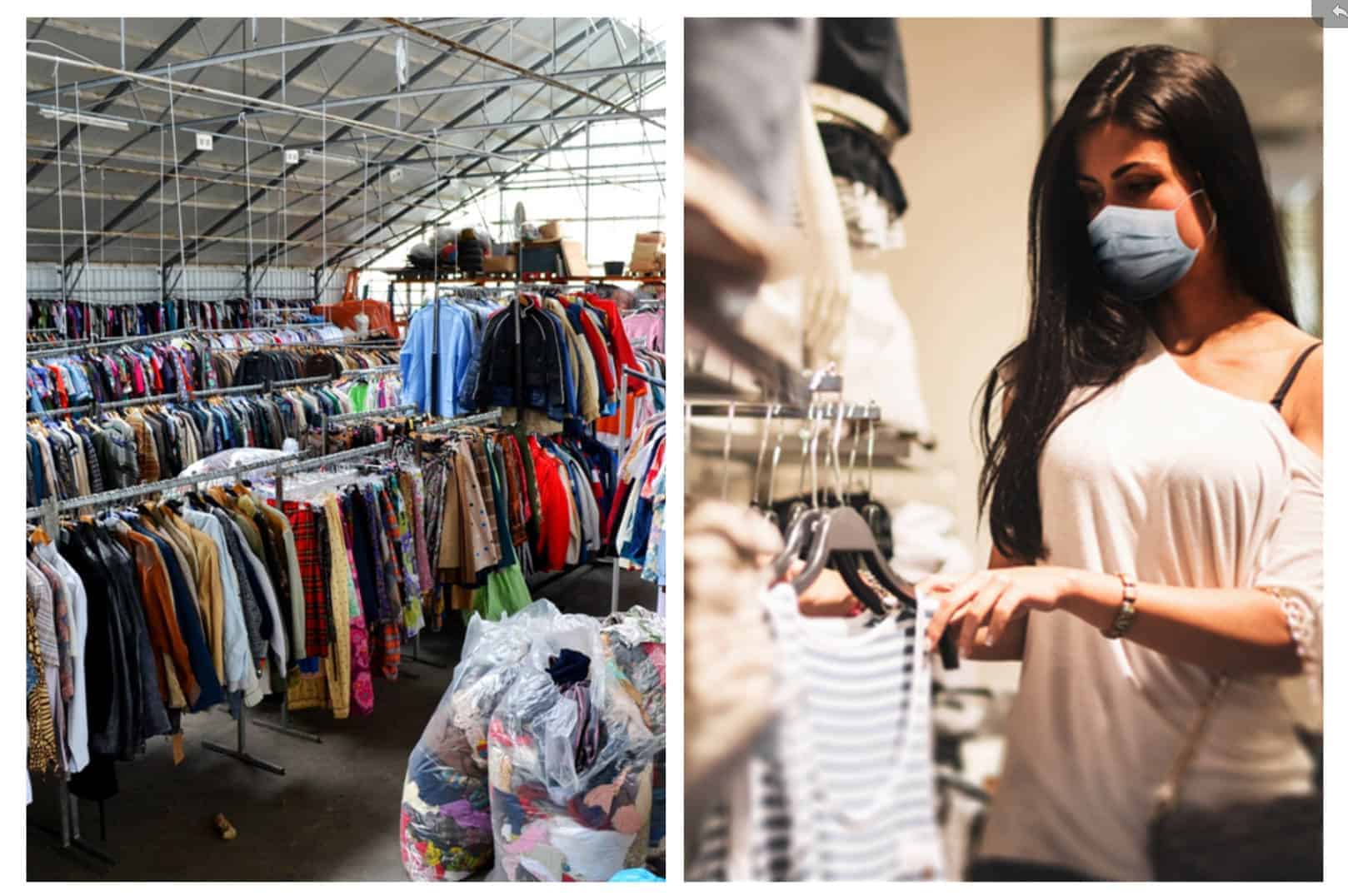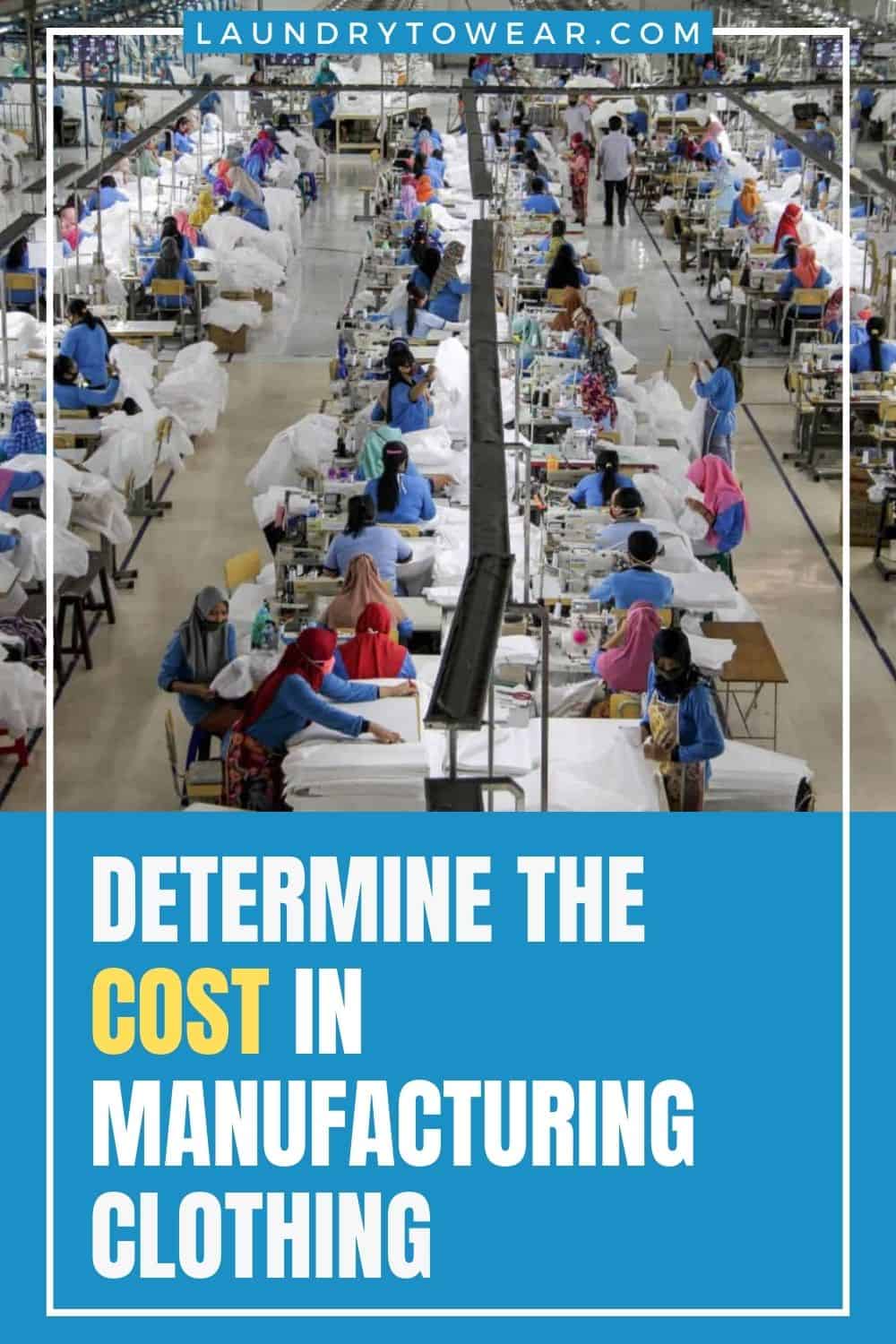Are you having some thoughts about starting your clothing business? One of the most critical questions you must answer is: how much does it cost to manufacture clothing?
Without the estimation, you won’t know how much capital you need for your business. Keep reading to learn more about garment cost!
Materials Cost
Fabric costing
The cost of the fabric will depend on its type, availability, and weight. The production phase and colors may also affect its price. If the fabric is made of rare materials, you can expect that it is more expensive. Online and offline stores also offer fabrics at varying prices.
Parameters affecting your fabric costing are unit of measurement and minimum order quantity. Order quantity and incoterm used are also included. There can also be value-added services like weaving or knitting and dyeing costs.
To give you an idea, here is the estimated price of some fabrics:
| Type of fabric | Estimated price |
| Upholstery fabric | $10-$20 per yard (Low quality)
$30-$60 per yard (Average quality) $100-$200 per yard (High quality) |
| Silk | $5-$65 per yard |
| Charmeuse | $7-$22 per yard |
| Chiffon | $5-$10 per yard |
| Dupioni | $13-$21 per yard |
| Raw Silk | $4-$8 per yard |
| Sumbrella | Around $25 per yard |
| Satin | $3-$40 per yard |
| Fleece | $1.99-$10 per yard |
| Cotton | $3-$12 per yard |
| Vicuña wool | $3,800 below 500 g |
| Guanaco | Under $2,000 |
| Mulberry Silk | $60 per yard |
| Cashmere | $18-$260 per yard |
| Fur | Can cost as much as $100,000 |
Before purchasing fabric, it is better to compare the prices of different stores to get the best deal. Here is a formula on how to get the fabric cost per garment:
Fabric price per yard x Fabric consumption in yards = Fabric cost per piece
Trims and accessories cost
Aside from fabrics, you also need to have trims and accessories. Without these materials, your garments cannot be completed. Trims are the materials that are part of the clothes permanently.
Meanwhile, accessories are items you attach to dresses for a specific purpose. Examples of trim and accessories are sewing thread, sticker label, size tag, and price tag.
Prices may vary depending on the quality and quantity of the materials. It’s advisable to research and compare the estimated costs of various trims and accessories.
Direct labor cost
Before computing the direct labor cost, it is essential to define direct labor. Direct labor refers to the workers who are directly involved in manufacturing. Examples of direct labor in the clothing business are those who sew, trim and dye the fabric.
When it comes to the cost of labor, it is considered a variable cost because it can rise and fall. It includes the wages, overtime hours, taxes, and benefits of direct labor employees.
As a reminder, never combine your direct labor cost with other types of labor. By preventing this, you can achieve an accurate total production cost.
To compute the direct labor cost, determine how much you pay your direct employees. After that, identify the additional labor costs like taxes, insurance, and other benefits. Lastly, add the regular wages and the additional labor cost to get the direct labor cost for the clothing.
Whether you are making a big or small clothing business, it is vital to compute the direct labor cost. Aside from providing you with accurate pricing, it will help you make decisions.
Factory overhead cost
Indirect labor cost
Indirect labor employees are not directly involved in manufacturing the clothes. But they also help in the operation of the business. In contrast with direct labor cost, it can be fixed or variable.
Examples of indirect labor employees are human resources, administrative staff, and accountants.
Calculating the indirect labor cost is the same as computing the direct labor cost. Determine the cost that your indirect employees worked for.
Next, determine the additional labor costs like fringe benefits. Combine the regular wages and the additional labor cost to have the indirect labor cost.
Occupancy cost
Expenses you spend on the space or location for the operation of your business is occupancy cost. It includes net rent, taxes, capital costs, operating costs, depreciation allowances, and insurances.
Administrative cost
The administrative cost is the expenses referring to the administration of the business. It may include bonuses and salaries of executives and professional fees. Office supplies and subscriptions are also administrative costs.
Carrying cost
If you are holding inventory in stock, you need to pay for a carrying cost. Some businesses keep carrying costs low.
It may require extra space, labor hours for supervising inventory, and higher insurance. Carrying costs include taxes, insurance, warehouse storage fees, and opportunity cost.
Machinery and equipment cost
Machine and equipment are needed when manufacturing clothes. The expense may not be limited to buying new equipment and maintaining them.
Pieces of equipment required for an apparel business are plotter cutting machines. Cutting machines and sewing machines are also necessary.
Compliance and regulation cost
In every industry, there are regulations that businesses must follow to maintain standards. To adhere to these regulations, you need to spend.
You must follow holiday compensation and the wage for leaves in the garment industry. Aside from that, there are also an equal remuneration policy and working hour policy.
Product Costing
Once you have determined all of the costs indicated above, you can calculate the product cost. To get the total product cost, here is the formula:
Materials Cost + Direct labor cost + Factory overhead cost = Product Cost
Usually, the materials cost is 50% of your total product cost. Direct labor cost is 20 %, while factory overhead cost is 30%.
Take note that you should add a markup to profit from your garments. Also, clothing companies use different methods when it comes to their pricing strategies.
Direct Costing
When using direct cost, only these three factors are considered to get the product cost. They are direct material costs, direct labor costs, and sales commissions.
This strategy is proper, especially if you want to know the lowest price to sell the product. Also, it will be easier to see if there is an increase in your expenses even there are no upgrades made to your product.
Absorption Costing
Absorption costing includes all the costs in manufacturing the product. Accounting for direct labor, indirect labor, direct materials, and factory overhead is needed.
The benefit of using absorption costing is that it can show total production costs. Also, it is easy to track the profits of the business.
Activity-Based Costing (ABC)
An organized way of getting the production cost is through activity-based costing. The cost of the activity is listed to the organization or services that execute the activity. Some factory overheads like distribution, quality, and design are accounted for.
Frequently Asked Questions
What are the stages of costing?
There are four stages of costing. These are pre-costing, cost of line adoption, post-production costing, and actual cost. Pre-costing refers to the rough estimate expected from the design.
On the other hand, the cost of line adoption is the cost of investment to manufacture the clothing. The pre-production costing includes all the detailed costing. Meanwhile, the actual cost is the cost during and after manufacturing.
What are the factors that can affect the cost of the garment?
Some of the factors that can affect the cost of the garments are fabric type, trims, and notions. Labels and packaging, production cost, shipping, and logistics are also factors. Lastly, the profit of the manufacturing organization can affect the cost.
What is cost-based pricing?
Cost-based is a pricing method where the profit element is added to the total production cost. The production cost is the reference to the final selling price. Ideally, the seller does not care what the other sellers’ prices are to the product.
What is the difference between wholesale and retail prices?
The manufacturer’s price to the retailer is called the wholesale price. The garments are usually bought for a large amount at a lower price.
Add the material cost, overheads, and profit margin to get the wholesale price. On the other hand, the retail price is the price given by the retailers to the end consumers.
How will I determine the correct pricing for my target market?
Three strategies for pricing can be applied to different target markets. These strategies are luxury pricing, budget pricing, and value-based pricing.
To elevate the status of loyal customers, luxury pricing is applied. Budget pricing is applicable when customer loyalty is low. Value-based pricing is for customers that give importance both to quality and price.
Summary
Putting up a clothing business is challenging. You must know how much it costs to manufacture clothing to make it easy. This article provides an overview of the various costs involved in clothing manufacturing, helping you understand what factors into the total product cost.
After that, you can determine how much you need to establish a clothing business.

Jessica Oliver is a fashion enthusiast with more than ten years of experience in the industry. She previously managed her own clothing store in New York before becoming a mother of three. With a passion for sustainability and a desire to share clothing care and recycling tips.

